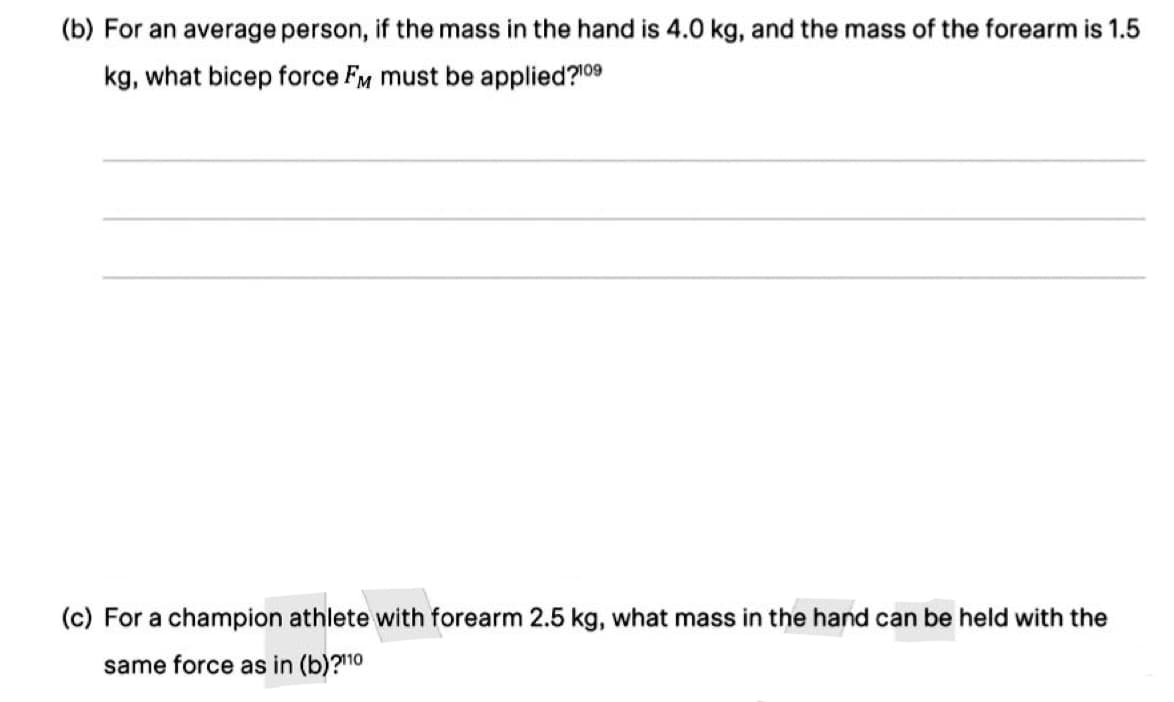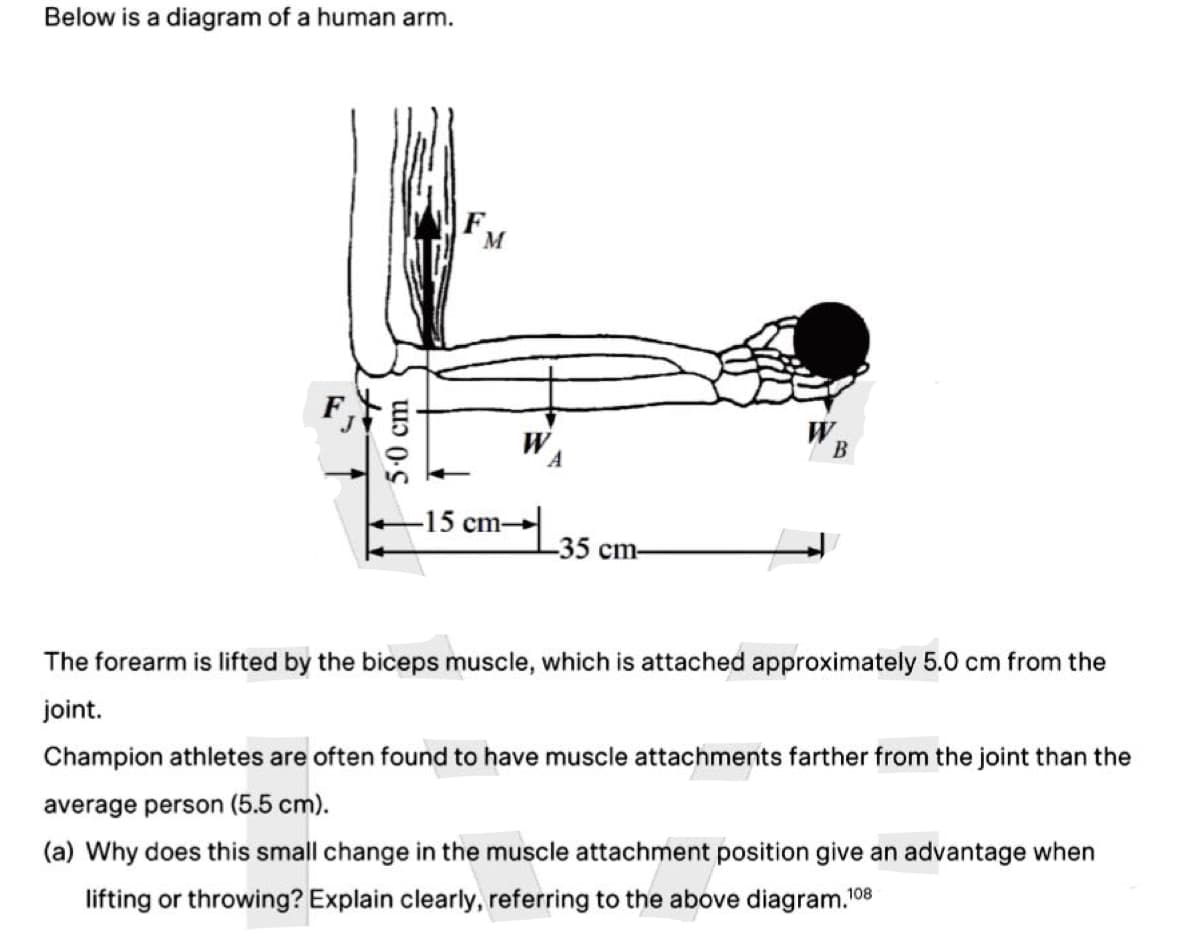Below is a diagram of a human arm. 5.0 cm F, M -15 cm- -35 cm- W. B The forearm is lifted by the biceps muscle, which is attached approximately 5.0 cm from the joint. Champion athletes are often found to have muscle attachments farther from the joint than the average person (5.5 cm). (a) Why does this small change in the muscle attachment position give an advantage when lifting or throwing? Explain clearly, referring to the above diagram.108
Below is a diagram of a human arm. 5.0 cm F, M -15 cm- -35 cm- W. B The forearm is lifted by the biceps muscle, which is attached approximately 5.0 cm from the joint. Champion athletes are often found to have muscle attachments farther from the joint than the average person (5.5 cm). (a) Why does this small change in the muscle attachment position give an advantage when lifting or throwing? Explain clearly, referring to the above diagram.108
Elements Of Electromagnetics
7th Edition
ISBN:9780190698614
Author:Sadiku, Matthew N. O.
Publisher:Sadiku, Matthew N. O.
ChapterMA: Math Assessment
Section: Chapter Questions
Problem 1.1MA
Related questions
Topic Video
Question

Transcribed Image Text:(b) For an average person, if the mass in the hand is 4.0 kg, and the mass of the forearm is 1.5
kg, what bicep force FM must be applied?¹09
(c) For a champion athlete with forearm 2.5 kg, what mass in the hand can be held with the
same force as in (b)?110

Transcribed Image Text:Below is a diagram of a human arm.
5.0 cm
F
M
-15 cm-
Ꮃ .
A
-35 cm-
W
B
The forearm is lifted by the biceps muscle, which is attached approximately 5.0 cm from the
joint.
Champion athletes are often found to have muscle attachments farther from the joint than the
average person (5.5 cm).
(a) Why does this small change in the muscle attachment position give an advantage when
lifting or throwing? Explain clearly, referring to the above diagram.10
108
Expert Solution
This question has been solved!
Explore an expertly crafted, step-by-step solution for a thorough understanding of key concepts.
Step by step
Solved in 3 steps with 3 images

Knowledge Booster
Learn more about
Need a deep-dive on the concept behind this application? Look no further. Learn more about this topic, mechanical-engineering and related others by exploring similar questions and additional content below.Recommended textbooks for you

Elements Of Electromagnetics
Mechanical Engineering
ISBN:
9780190698614
Author:
Sadiku, Matthew N. O.
Publisher:
Oxford University Press

Mechanics of Materials (10th Edition)
Mechanical Engineering
ISBN:
9780134319650
Author:
Russell C. Hibbeler
Publisher:
PEARSON

Thermodynamics: An Engineering Approach
Mechanical Engineering
ISBN:
9781259822674
Author:
Yunus A. Cengel Dr., Michael A. Boles
Publisher:
McGraw-Hill Education

Elements Of Electromagnetics
Mechanical Engineering
ISBN:
9780190698614
Author:
Sadiku, Matthew N. O.
Publisher:
Oxford University Press

Mechanics of Materials (10th Edition)
Mechanical Engineering
ISBN:
9780134319650
Author:
Russell C. Hibbeler
Publisher:
PEARSON

Thermodynamics: An Engineering Approach
Mechanical Engineering
ISBN:
9781259822674
Author:
Yunus A. Cengel Dr., Michael A. Boles
Publisher:
McGraw-Hill Education

Control Systems Engineering
Mechanical Engineering
ISBN:
9781118170519
Author:
Norman S. Nise
Publisher:
WILEY

Mechanics of Materials (MindTap Course List)
Mechanical Engineering
ISBN:
9781337093347
Author:
Barry J. Goodno, James M. Gere
Publisher:
Cengage Learning

Engineering Mechanics: Statics
Mechanical Engineering
ISBN:
9781118807330
Author:
James L. Meriam, L. G. Kraige, J. N. Bolton
Publisher:
WILEY